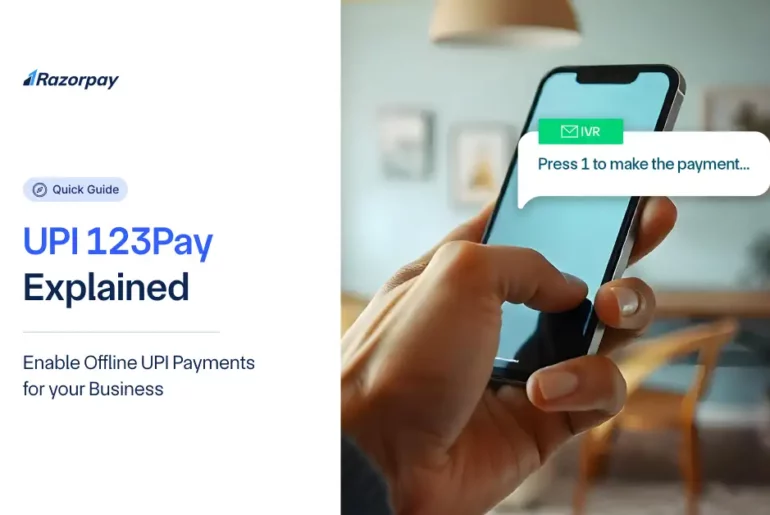Table of Contents
What is an Invoice?
An invoice is a commercial document that a seller sends to a buyer to request payment for the products or services purchased. The invoice includes details such as the names of the seller and buyer, item descriptions, item quantities, the cost of the products or services, and payment terms. It serves as a legal record of the transaction and is crucial for tracking payments and managing financial records.
Related Read: How to Send an Invoice?
Invoice Format and Template
Here’s a visual representation of the invoice example

The primary purpose of an invoice is to serve as a formal document between the seller and buyer regarding the sale of goods or services.
The uses of the invoice also includes:
1. Requesting Payment
Invoices act as bill statements outlining the amount due and payment terms. This helps manage cash flow and ensure timely payments.
2. Providing Information
Invoices include detailed information about the goods or services provided, such as descriptions, payment terms and quantities. This transparency helps customers understand exactly what they are being billed for.
3. Accounting
For bookkeeping purposes, invoices are crucial. They provide a record of sales, helping businesses track their revenue and manage their finances effectively.
4. Tracking Sales
Invoices help monitor sales trends and performance over time. By reviewing your invoices, you can identify peak sales periods and adjust your strategies accordingly.
5. Monitoring Payments
Invoices serve as a record of payments made and outstanding amounts. This helps manage accounts receivable and follow up on overdue payments.
6. Serving as Legal Records
Invoices formalize the agreement between the seller and the buyer regarding the sale of goods or services and can serve as legal documents in disputes. They provide evidence of what was agreed upon and can be used to settle legal issues related to the transaction.
7. Easy Tax Filing
Invoices are essential for tax purposes. They provide the documentation to accurately report income and claim deductions, making tax filing more straightforward.
8. Business Analytics
By analyzing invoice data, you can gain insights into your business’s performance. This information can guide strategic decisions and help identify areas for improvement.
9. Tracking Inventory
For businesses with inventory, invoices help track stock levels. They provide data on what has been sold and what needs replenishing, aiding in effective inventory management.
Related Read: What is Invoice Factoring and How Does It Work?
What are the Different Types of Invoices?
1. Proforma Invoice
A proforma invoice is an estimate of costs and terms for goods or services before a sale. It helps clients understand expected charges and facilitates agreement.
Related Read: Difference Between Invoice Vs Proforma Invoice
2. Standard or Sales Invoice
A standard, or sales invoice itemizes goods or services provided, including quantities, prices, and applicable taxes. Issued upon completion of agreed terms, it specifies payment due date.
3. Credit Notes
A credit note is issued to rectify overcharges or refund returned goods. It functions as a negative invoice, reducing a customer’s balance.
For example, a $50 refund would be represented by a -$50 total on the credit note.
4. Debit Notes
A debit note increases a customer’s outstanding balance due to undercharges or additional services. It supplements the original invoice for accurate accounting.
For example, if estimated hours were exceeded on a project, a debit note would be issued for the extra time worked. These notes are crucial for small businesses to adjust billing as needed.
5. Timesheet Invoice
Timesheet invoices are used to bill clients based on hourly rates. Common in industries like law, creative agencies, consulting, and psychology, they accurately reflect work duration and ensure precise billing for services rendered.
6. Recurring Invoice
Recurring invoices are issued regularly for services like subscriptions or maintenance contracts. They ensure consistent cash flow and simplify the billing process. Cloud-based invoicing software automates creation and sending.
For example, Monthly IT packages or freelance marketing subscriptions.
7. Interim Invoice
Interim invoices are issued for large projects with phased payments. By billing for completed project portions, they provide steady cash flow. This is crucial for businesses managing long-term projects.
8. Final Invoice
A final invoice is issued upon project completion, detailing all charges incurred. It may differ from previous invoices due to scope changes and should itemize services provided, total cost, invoice number, due date, and accepted payment methods.
9. Overdue Invoice
An overdue invoice is sent when a payment is past due. It serves as a reminder and may include penalties, late fees, or interest. This invoice aims to prompt payment and outline the next steps if the payment remains unpaid.
10. Commercial Invoice
A commercial invoice is specifically used for international sales. It includes detailed information about the goods being shipped, such as quantity, weight, description, and total value. This document is crucial for customs clearance and determining applicable duties.
Related Read: What Is a Shipping Invoice?
11. Expense Report
While not strictly an invoice, an expense report is often treated similarly. It’s a document submitted by an employee to request reimbursement for business-related expenses like travel, meals, or supplies.
12. Mixed Invoice
A mixed invoice combines both credit and debit adjustments on a single document. This is less common but useful for correcting errors or making multiple changes to a customer’s account in a single transaction.
Detail Read About: 15 Types of Invoices with Examples
Best Practices for Invoicing
1. Prioritize Invoices
Prioritize the invoices by due dates sort and prioritize your invoices based on their due dates to ensure timely follow-ups and payments.
2. Create Professional Invoices
Design clean, easy-to-read invoices with all necessary details to maintain professionalism and clarity.
3. Offer Early Payment Discounts
Encourage early payments by offering discounts, which can improve your cash flow.
4. Use Invoicing Software to Automate Invoice
Automate your invoice processing to save time and reduce errors by using reliable invoicing software.
5. Include All Payment Details
Provide clear payment instructions, including bank details and accepted payment methods, to avoid confusion.
6. Accept Payments Electronically
Facilitate quicker payments by accepting electronic payments such as bank transfers or credit card payments.
7. Accept Various Payment Methods
Offer multiple payment options to make it convenient for clients to pay you.
8. Address the Client
Personalise your invoices by addressing them to the specific client to build stronger business relationships.
9. Add a Thank You Note
Include a brief thank you note to show appreciation and foster positive client relations.
Related Read: What is Invoice Reconciliation and How to Reconcile Invoices?
Advantages of Using Invoice Software to Automate Invoice Process
Here’s a list of the advantages of using invoice software to automate invoice processes.
1. Automation
Invoice software streamlines and automates the entire invoicing process, significantly reducing manual work and minimizing errors.
2. Accessibility
With cloud-based invoicing software, you can access your invoices from anywhere, at any time. This flexibility is crucial for managing your finances and keeping track of payments regardless of location.
3. Payment Options
Invoice software typically supports a variety of payment methods, including credit cards, bank transfers, and online payment gateways. Multiple payment options make it more convenient for clients.
4. Database Management
Organize and manage all your invoices and client information in a centralized database. This helps maintain accurate records, facilitates easy retrieval of past transactions, and improves overall financial organization.
5. Financial Analysis
Leverage built-in financial analysis tools within invoice software to monitor and assess your business’ financial health.
6. Centralized Control
Centralize control of your invoicing operations by managing all aspects of your invoices, payments, and client interactions from a single platform.
Related Read: Difference Between Invoice and Bill
How Have Invoices Evolved?
1. Ancient Memory Aids
In ancient times, tally sticks were used to keep track of numbers, quantities, and messages for financial and legal purposes. One of the earliest examples is the Ishango Bone from the Democratic Republic of Congo, dating back around 20,000 years.
2. Clay Tablets as Invoices
Around 5000 BC in Mesopotamia, people began carving invoices on clay or stone tablets. These early invoices documented transactions with basic mathematical notations, serving as permanent trade records.
3. Handwritten Paper Invoices
As civilisation progressed, handwritten invoices on materials like animal skin, parchment, or paper became common. These invoices often featured signatures or seals to verify their authenticity and validate the transaction.
4. Digital Invoices
The introduction of computers transformed invoicing, making the process faster, easier, and more cost-effective. Digital invoices eliminated much of the traditional paperwork, reducing costs and labour for businesses.
5. Online Invoices
With the rise of the internet, invoices transitioned to a paperless format sent via email. Online invoicing is not only convenient and quick but also environmentally friendly, reducing the need for physical documents.
6. Mobile Invoices
Today, mobile invoicing has become the norm, thanks to specialized SaaS companies. Mobile invoicing offers automation, enhanced security, and the ability to generate and pay GST invoices instantly, making it incredibly convenient for businesses.
Related Read: Difference Between an Invoice and Receipt
How Razorpay Invoice Software Helps to Manage Your Invoices?
Razorpay Invoice Software streamlines invoicing with GST-compliant, instantly payable invoices. It enhances cash flow by enabling online payments and offers detailed expense breakdowns. Features like partial payments, automated notifications, and dashboard reporting simplify financial management even further.
Related Read: What Is an Open Invoice?
Conclusion
Invoices are crucial for keeping track of transactions, requesting payments, and managing finances. With tools like Razorpay Invoice Software, invoicing becomes a breeze, offering instant, GST-compliant invoices and quick online payments. By adopting modern invoicing solutions, you streamline your business operations and improve your cash flow.
Related Read: What is Invoice Price?
FAQs
1. Is an invoice the same as a bill or a receipt?
No, an invoice requests payment, a bill is a statement of charges, and a receipt confirms payment received.
2. Does getting an invoice mean payment has been made?
No, an invoice indicates the amount due, not that the payment has been made.
3. What are common invoice payment terms?
Common terms include 7 days, 10 days, 30 days, 60 days, or even 90 days.
4. Is an invoice a receipt?
No, an invoice requests payment while a receipt confirms that payment has been made.
5. Is an invoice a bill?
No, an invoice is a payment request, whereas a bill is a statement of the amount owed.
6. What are the legally required elements on an invoice?
Legally required elements include the invoice date, unique invoice number, business and client information, itemized list of goods or services, and the total amount due.
7. How do I create an invoice?
To create an invoice, use invoicing software like Razorpay for a streamlined, professional process. You can also make one by listing your business details, the client’s information, and the products or services provided. Include the invoice number, date, payment terms, and the total amount due.
8. When should I send an invoice?
Send an invoice immediately after delivering goods or services to ensure prompt payment.
9. What should I do if a customer misses the payment due date?
Send a polite reminder first, then follow up with a late payment notice if necessary, and consider implementing late fees.
10. What are the benefits of using electronic invoices (e-invoices)?
E-invoices save time, reduce paper use, enhance accuracy, and speed up the payment process.



